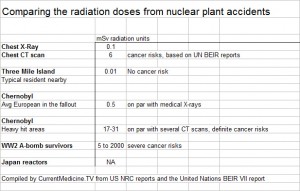Putting a little Ritz in health care
July 31st, 2012, By Peter Pronovost, MD, PhD
Recently, I had an enlightening encounter with Horst Schulze, who led Ritz-Carlton Hotels to national awards and has since opened his own hotel chain, Capella. Hortz gave an informal presentation to members of a program that I’m taking part in, the Baldrige Executive Fellowship, and we continued to talk afterwards. Capella has five ultraluxury hotels from New York to Singapore, and all have been recognized as tops in their region. Horst spoke to us of a culture of excellence. He knows—he has built such a culture time and time again. Excellence does not occur by chance. It requires clear goals and a system.
Horst explained that to be great, everyone in the organization needs to know the goals, in order of importance. For Capella, the goals are 1) keep existing customers, 2) add new customers, and 3) optimize the spend of each customer. Every employee not only needs to know the goals, but they need to know the behaviors to achieve them. The Capella employees ensure a warm welcome, compliance with and anticipation of guests’ needs, and a fond farewell.
All employees are required to know service standards. Twenty-five of them. One of them states that you are responsible to identify and immediately correct defects before they affect a guest—for example, getting customers food when the restaurant is closed. Defect prevention is key to service excellence, just as it is to delivering safe health care. Another service standard states that when a guest encounters any difficulty, you are responsible to own it and resolve the problem to the guest’s complete satisfaction.
Capella has standard processes for everything—how to submit defects, how to resolve them. And they trained staff in the goals, the behaviors and the processes. Each hotel, every morning is required to have a huddle at which all staff attend. They review the goals for the company and read one of the behaviors, called service standards. Every day they read a different one. They cycle repeats every 25 days.
If a manager did not do this, Horst said, they would be fired.
Capella also had unique hiring process. Horst described how Capella did not hire people, they selected them. The difference may seem subtle, but it is vitally important. Capella employees were joining a cause to be the global leader in service business. The employees they selected were special, and they needed to feel it. The motto Horst used at Ritz and continues to use at Capella, is “Gentleman and ladies serving gentleman and ladies.” Horst wants his employees to take pride in their work.
Horst went on to tell me that health care talks a lot about safety culture and teamwork. Yet we mostly focus on how people feel, how well they collaborate, how well they like management. Teams, he said, require goals and need to be accountable toward realizing them. The whole purpose of a team is to achieve a goal. The idea of goals and accountability seems to be missing in health care.
I reflected on this discussion and explored what are the top goals in a health care delivery system. I believe they would be, in order of importance: 1) to eliminate preventable harm, 2) to optimize patient outcomes and experience, 3) to reduce unnecessary health care costs. Now, I know that caring for patients is a whole lot more complex than caring for hotel guests, even the most discriminating ones. Yet the concepts could apply and we could specify some expected behaviors. For example:
- We will ensure we meet the patient’s needs.
- We will always introduce ourselves on rounds and invite patients and family members to participate.
- We will ensure patients know how to care for themselves when they go home.
- We will always practice evidence-based medicine.
- We will treat our colleagues with respect and appreciate them.
- We will work collaboratively with other members of the care team
- We will be accountable to continuously improve
- We will greet patients with a smile
- We will act humbly.
- We will listen.
Imagine what health care could do for patients, if all employees knew our goals, if they had clear behaviors for achieving them, and if they got feedback on performance and were accountable for results. For one, staff on individual units would identify and learn from local defects so that harm did not reach patients. Units would have standards of service excellence and review their scores on patient satisfaction surveys. Managers whose units did not improve performance would be trained and ultimately removed if they continued to lag.
Excellence is a process. It requires clear goals that all staff must know. Let’s try setting clear goals in health care and ensure all staff know them.









